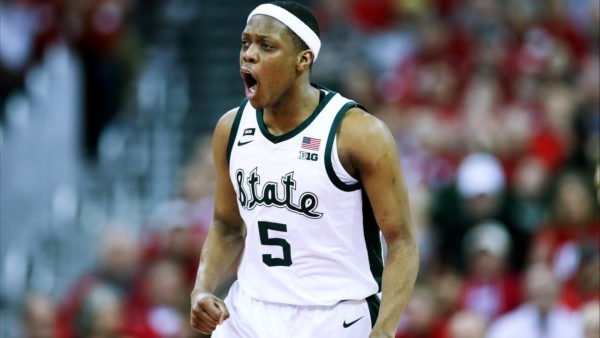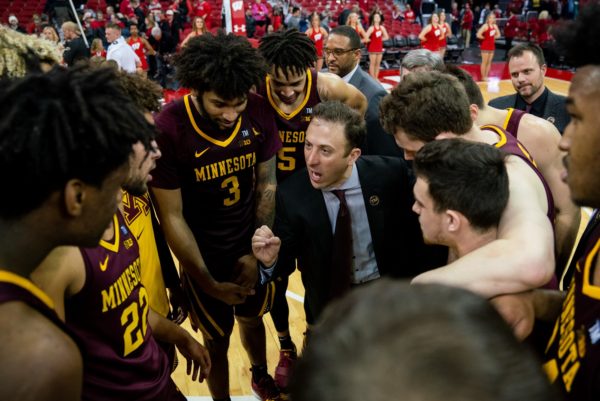NCAA Tournament Instareaction: Big Ten Edition
Posted by Tommy Lemoine on March 17th, 2019Below is a review of how the selection process concluded for each Big Ten team and what they should expect in the first few rounds of the upcoming NCAA Tournament.

- Michigan State, #2 seed, East Region. Michigan State backed up its regular season conference co-title by beating Michigan on Sunday en route to the Big Ten Tournament title. It was the Spartans’ third win over the Wolverines in three weeks, giving them more Quadrant 1 wins than any team in America. Their reward? A potential date with #1 overall seed Duke in the Elite Eight. Of course, Tom Izzo’s club will have to get there first, which is easier said than done. Assuming it gets past #15 Bradley (and it’s never safe to assume), Michigan State would play either Louisville — a team it lost to in November — or Big Ten foe Minnesota in the Round of 32. Still, the Spartans are superior to both teams and should reach Washington, DC. Once there, a win over #3 LSU or #6 Maryland (or Cinderella) would set up a highly-anticipated matchup with the Blue Devils. With Cassius Winston at the helm and forward Nick Ward back in the lineup, Michigan State has enough depth and physicality to hang with the Blue Devils for 40 minutes. Whether it’s enough to beat a trio of top-5 NBA Draft picks remains to be seen.
- Michigan, #2 seed, West Region. The Wolverines hung on to a #2 seed despite dropping five of their last 13 games, setting up a rematch with Montana, which they played in the First Round as well just last March. Like that contest, Michigan’s elite defense should have no problem shutting down the sharp-shooting Grizzlies. A Second Round date with #7 Nevada or #10 Florida — both inconsistent down the stretch — also poses little danger to last season’s National Runner-Up. A trip to Anaheim, however, would be a different story. Assuming #3 Texas Tech avoids another bizarre upset, Michigan would likely face the Red Raiders in a Sweet Sixteen matchup between the nation’s two stingiest defenses. Are the Wolverines capable of winning that game and knocking off #1 seed Gonzaga for another trip to the Final Four? Absolutely. But their up-and-down offense will have to start scoring more consistently for that to happen.
- Wisconsin, #5 seed, South Region. What are we to make of the Badgers? Always beloved by advanced metrics, Wisconsin finished the season ranked #12 overall in KenPom thanks to a rock-solid defense that led the Big Ten in efficiency during conference play. Not to mention Ethan Happ (17.1 PPG, 10.5 RPG, 4.6 APG), who ranked among the league’s best in nearly every statistical category known to man. One category not worthy of praise, of course, is free throw shooting (46.5% FT), which has proved to be Happ’s — and perhaps the team’s — kryptonite this season. That could be an issue against a red-hot Oregon team that has size, length, and fouls at a high rate. The #12 Ducks are good enough to beat Wisconsin and may well do so if they grab an early lead. If the Badgers can control the game flow, though, wins against both Oregon and an equally methodical, defensive-minded Kansas State team in the Round of 32 are also within the realm of possibility. For a team with only one consistent offensive threat, a fourth Sweet Sixteen berth in five seasons is probably Wisconsin’s ceiling.
- Maryland, #6 seed, East Region. Maryland has not won three games in a row since January, which does not bode well for a team now entering the NCAA Tournament. It’s also worth noting that the Terrapins — college basketball’s fourth-youngest team — has beaten just two opponents this season ranked within the KenPom top-30 (Purdue and Wisconsin). Anthony Cowan is among the league’s best point guards and Bruno Fernando is an NBA-caliber big man, but one wonders if Maryland can get past offensively-gifted Belmont or a veteran Temple squad on Thursday, much less LSU (or Yale?) in the Round of 32. Then again, none of those opponents are overwhelmingly talented, and few teams can match the Terrapins’ interior size and athleticism.

- Minnesota, #10 seed, East Region. Richard Pitino vs. his dad’s old program? The committee couldn’t have scripted it any better. Minnesota removed itself from any bubble debate by knocking off Purdue twice in March, setting up the opportunity to play a Louisville team that dropped eight of its final 12 games. That’s the good news. The bad news is that the Cardinals are underseeded according to KenPom (#17 overall) and led by a coach, Chris Mack, who has reached the Sweet Sixteen four times as a #6 seed or worse. The Gophers are a poor shooting team that will need top-scorer Amir Coffey — who’s averaged 23.8 PPG since February 28 — to continue hitting shots in order to win. A strong performance from Jordan Murphy (11.5 RPG), the Big Ten’s leading rebounder, would also help. Either way, Minnesota is probably too mediocre to win more than a game.
- Iowa, #10 seed, South Region. Simply put, Iowa was a bad basketball team toward the end of the season. The Hawkeyes lost four straight games entering the Big Ten Tournament — including a 14-point home defeat against Rutgers — and were shellacked by Michigan on Friday night. Whether it was Fran McCaffery’s suspension-garnering tantrum or simply natural regression after a remarkably lucky 21-6 start, Iowa is clearly not the team we thought it was as recently as mid-February. For McCaffery’s group to beat Cincinnati, it will need to knock down shots from the perimeter; the Bearcats simply don’t allow good looks in the paint (44.7% 2FG defense). That fact doesn’t bode well for forward Tyler Cook (14.9 PPG, 7.9 RPG), whose late-season struggles further compounded Iowa’s poor play. Considering where this game is being played (Columbus, Ohio) — less than two hours from Cincinnati’s campus — don’t count on the Hawkeyes advancing.
- Ohio State, #11 seed, Midwest Region. The Indiana-Ohio State Big Ten Tournament match-up proved to be a veritable NCAA Tournament play-in game, with the Buckeyes earning one of the last at-large bids and the Hoosiers just missing out. The return of big man Kaleb Wesson (14.4 PPG, 6.8 RPG) — who started against Indiana after missing the team’s three previous games due to suspension (all losses) — probably made the difference for Ohio State. With the 6’9″, 270-pound Wesson in the lineup, the Buckeyes are a markedly better team, able to play inside-out and get second-chance looks otherwise not possible in his absence. To beat Big 12 Tournament champion Iowa State, they will need to slow down the Cyclones’ uptempo attack and keep Wesson on the floor. If Ohio State turns this into a half-court game and Iowa State goes cold from the perimeter, an upset is possible. Another upset against #3 seed Houston in the Round of 32? Not likely.









































